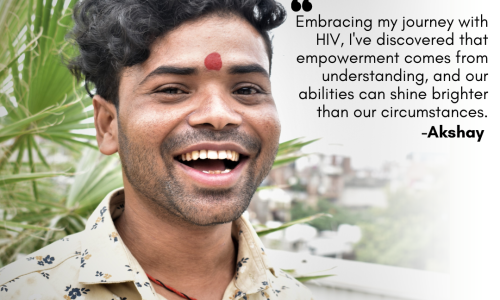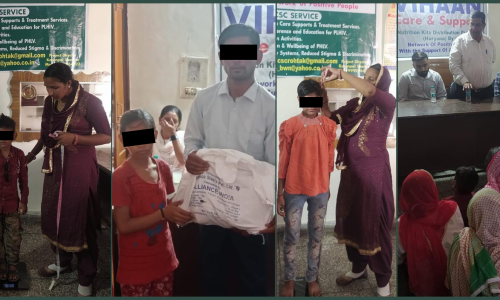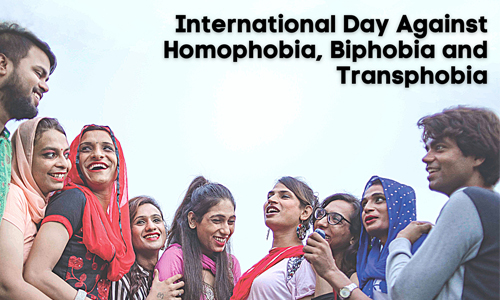
From COVID-19 To AIDS, It Is Important To Take Diagnostics Closer To Communities
The response to the two diseases require similar public health approaches – behaviour change, communication for prevention, linkages to testing, contact-tracing, care, support and regular follow-ups.
With the end of India’s COVID-19 epidemic not yet in sight, the resilience of the country’s health systems is faced with a serious test.
The limitations of the public health system in India are well-known. India lags behind not only among its BRICS peers but also some of its neighbours on the health and quality (HAQ) index.
COVID-19 has substantially disrupted healthcare services, especially due to overburdening at hospitals and clinics. In settings like ours, with a high burden of HIV, tuberculosis and other infectious diseases, these disruptions have in turn driven up the number of deaths due to HIV by up to 10%, and due to tuberculosis by up to 20%.
There are many parallels between the two diseases of COVID-19 and AIDS, right from both being caused by retroviruses to both their epidemics being accompanied by numerous conspiracy theories. Notably, both AIDS and COVID-19 patients also contend with misinformation and stigma, leading to issues of access and discrimination. Policing and detention have made it harder for healthcare workers to reach those at greater risk, depriving them of effective prevention and interrupting treatment. We have already witnessed the blurring of health and law enforcement with COVID-19 as well.
Social similarities apart, the response to both diseases require similar public health approaches – behaviour change, communication for prevention, linkages to testing, contact-tracing, care, support and regular follow-ups, etc.
Indeed, key strategies that can be used to integrate our response to COVID-19 and HIV include community-based testing mechanisms, peer-led contact tracing and prevention of stigma and discrimination.
It is important to engage affected communities from the beginning in all response measures – building trust, ensuring suitability and effectiveness, as well as frequent sharing of information. Peer-counselling is important. There is an urgent need to ensure access to free or affordable screening, testing and care for the most vulnerable and hard-to-reach population groups.
Next, we must take diagnostics closer to communities and map vulnerable areas to address inequities. Community-based testing (CBT), pioneered with our response to HIV, has been successful and can be used to screen for COVID-19 using rapid diagnostic kits in non-judgemental ways.
The use of police and other government agencies to aid contact-tracing hasn’t paid off. It’s time to acknowledge that peer groups are more useful.
Stigma and discrimination
There is a need to combat all forms of stigma and discrimination as well, including those based on race, social contacts and profession (including among healthcare workers).
From the HIV epidemic, we have learnt that restrictive, stigmatising and punitive measures can lead to significant human-rights abuses, with disproportionate effects on already vulnerable communities. They can also undermine epidemic response, sending people with symptoms underground, and fail to address the underlying barriers that people face when they attempt to protect their health and that of their communities.
There is also a need to move away from compulsory restrictions and towards reaching and serving those who are more vulnerable, scaling up screening and testing for those most in need, empowering people with knowledge and tools to protect themselves and others.
The lack of a comprehensive, multi-sector response, misinformation creating stigma, poor community engagement and selective focus on metropolitan centres has led to rapid and consistent spread of disease in some states, especially those with poor health infrastructure delivery capacity.
Fortunately, there is still room to reevaluate – but the government must move beyond hyperbole to introspect and set forth concrete actions with strict deadlines.
Evidence shows that an integrated approach to manage them might be able to encourage safer behaviour, increase detection rates, bring more people under treatment and, at the same time, offer cost-benefits to the health system by using the same channels for multiple services.
The national HIV epidemic has also taught us that we need to have strong surveillance mechanisms and region-specific strategies to address key drivers. The HIV epidemic was fuelled by more developed, urbanised districts with large populations, better socio-economic conditions and poor literacy. Such geographies are more likely to have consistently high HIV-prevalence levels.
The approach of focusing on high-prevalence states rather than districts that are showing signs of rapid urbanisation and socio-economic development has led to the emergence of newer pockets of HIV in low-prevalence states.
The latest round of HIV sentinel surveillance has shown declining HIV prevalence trends in the traditional high-prevalence states of Andhra Pradesh, Karnataka, Maharashtra, Tamil Nadu and Telangana. However, the results face the other way in Gujarat, Punjab, Rajasthan, Haryana, Uttar Pradesh, Delhi and Bihar, where the epidemic has been showing a rising trend.
So we need region-specific strategies for HIV control, based on the principal drivers of the HIV epidemic in different regions of India.
Virus propaganda
Stigma and discrimination manifest differently in different contexts and for different populations – but some aspects are constant. We have learned useful lessons in our HIV response that we can apply to our COVID-19 response. HIV-related discrimination was caused by fear, misinformation and because people saw it through a moralistic lens. Calling COVID-19 a “foreign” virus and accusing certain groups of being responsible for spreading it can be similarly detrimental. It increases stigma for some groups, and makes others complacent as they begin to think of it as someone else’s problem.
The HIV response showed us that stigma can take root on several grounds and can manifest in several settings. It can also particularly impact certain groups that may find it difficult to access services by virtue of who they are, where they live and work, or their sexual orientation. The COVID-19 response needs to take this into account and make sure to combat stigma and discrimination in all forms.
Involving people living with HIV and key populations affected by HIV made a huge difference to the response. Meaningfully engaging at the community level, including with people who have recovered from COVID-19, with their consent, can lead to increasing awareness and reducing stigma and discrimination.
Cost-effective and evidence-based interventions for COVID-19 – like ‘test, trace, treat’ – are available and should be delivered in an integrated, stigma-free manner. These interventions should include system-level integration – effective implementation of all COVID-19 prevention activities at the district-level and capacity-building of existing program managers. Carefully assessing and documenting key lessons learned from the current HIV programme and best practices that can be replicated in COVID context are the need of the hour.
In an environment of limited resource availability for health, as at present, some suggest joint action on HIV-COVID-19 could be efficient, cost-effective and sustainable. In view of the higher degree of stigma attached to HIV, largely because of its sexual connotations, integration may not be entirely feasible but the lessons learnt from HIV programmes can be very beneficial.
Written by S.Y. Quraishi is former director-general, National AIDS Control Organisation, and currently chairman, India HIV/AIDS Alliance.
Originally published on The Wire (hyperlink to – https://thewire.in/health/
Recent Blog

Empowering Lives Overcoming HIV Misinformation with Determination and Hope:
At 22 years old, Akshay firmly believes that life revolves around the lessons you acquire and the abilities
Read More...
22 Aug 2023

Building an Inclusive World: Empowering the Trans Community Together:
Hi, I am Radhika. I face many challenges as a Trans woman when it comes to finding my
Read More...
20 Jul 2023

Empowering Young Warriors: Nutrition Kits for Children Living with HIV:
We're thrilled to share the success of our recent nutrition kit distribution to children living with HIV (CLHIV)
Read More...
12 Jul 2023

The Struggle of Embracing Identity International Day Against Homophobia Transphobia and Biphobia:
"I've never had an interest in fading into the background and becoming invisible. Let's start with this powerful
Read More...
17 May 2023

